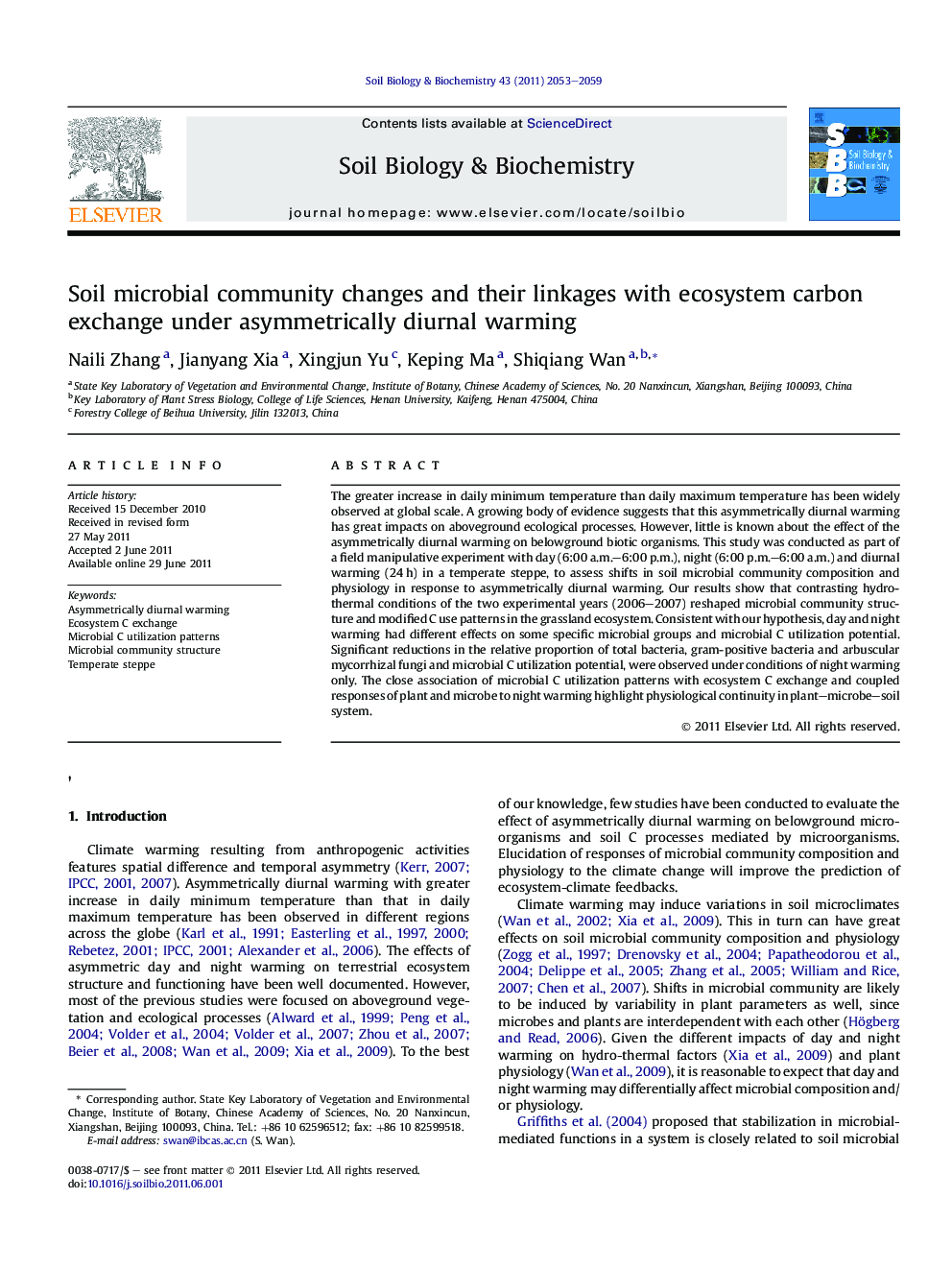| Article ID | Journal | Published Year | Pages | File Type |
|---|---|---|---|---|
| 2025076 | Soil Biology and Biochemistry | 2011 | 7 Pages |
The greater increase in daily minimum temperature than daily maximum temperature has been widely observed at global scale. A growing body of evidence suggests that this asymmetrically diurnal warming has great impacts on aboveground ecological processes. However, little is known about the effect of the asymmetrically diurnal warming on belowground biotic organisms. This study was conducted as part of a field manipulative experiment with day (6:00 a.m.–6:00 p.m.), night (6:00 p.m.–6:00 a.m.) and diurnal warming (24 h) in a temperate steppe, to assess shifts in soil microbial community composition and physiology in response to asymmetrically diurnal warming. Our results show that contrasting hydro-thermal conditions of the two experimental years (2006–2007) reshaped microbial community structure and modified C use patterns in the grassland ecosystem. Consistent with our hypothesis, day and night warming had different effects on some specific microbial groups and microbial C utilization potential. Significant reductions in the relative proportion of total bacteria, gram-positive bacteria and arbuscular mycorrhizal fungi and microbial C utilization potential, were observed under conditions of night warming only. The close association of microbial C utilization patterns with ecosystem C exchange and coupled responses of plant and microbe to night warming highlight physiological continuity in plant–microbe–soil system.
► We estimated soil microbial communities under asymmetrically diurnal warming. ► Night warming negatively affected the relative proportion of specific microbial groups. ► Night warming reduced microbial C utilization. ► Close associations between microbial C utilization and ecosystem C exchange were observed.
